The majority of alternative prints and historical processes require negatives of the same size of the final image. Photographers that use mammoth cameras can obtain them directly en prise de vue, while others must enlarge their negatives to obtain the desired image. There’s plenty of analogical techniques that produces negatives adapt for each alternative technique, but digital negatives printed on transparent films are getting more and more common.
The result is a cocktail between chemical photography that is 150-years-old and the most modern digital technologies. A good way to close the circle.
Guides, manuals, articles and tutorials
The most complete and meticulous guide, reference point about digital negatives since a couple of years, surely is Precision digital negatives (PDN for the rest of the article) by Mark Nelson. The site doesn’t give any information, but an e-book is to be bought, for around 80 euros.
I personally think it is quite expensive. The book is redounding, it could be reduced to a quarter, it is terribly pedagogical and pedant, deeply American. But after all, PDN surely is an essential reading. It is the base and the first work that accurately formalized the procedure to obtain digital negatives. It can be resumed in three steps:
- Determination of the reference exposure time, the exact time to gain d-max of a certain process. It fixes the black point of the print.
- Determination of the negative color, who will give back a pure white after an exposure equal to the reference time. This procedure fixes the white point of the print.
- Determination of the characteristic curve of the process. This linearizes the answer of the print between black and white point fixed before.
Damiano Bianca came to similar PDN conclusions in his wonderful italian article Negativi digitali inkjet.
As I do, Damiano Bianca uses a method derived from the three PDN steps and with the help of a useful automatized instrument: the Chart Throb that speed the generation of the response curve necessary to produce digital negatives.
Talking about the process I use, it is quite the same Michael Koch-Schulte describes in his Quick Guide to Making Digital Negatives. Moreover his website contains the interesting article The RNP-Array System, which explores the influence on digital negatives of different color space models.
Those informations help you produce the best digital negatives you can produce nowadays. There are some more websites that, even if they are not really up to date, deserve a reading.
Digital negatives precursor surely is Dan Burkholder, even if he doesn’t use colored negatives. Jeffrey D. Mathias’ Guide to Platinum Palladium Photographic Printmaking contains tons of informations about platinum and palladium prints and also includes a part on digital negatives. This last describes completely different methods compared to PDN, often using several overlapped and registered negative. Ron Reeder is another printer of this prestigious technique; he wrote a wonderful chapter on digital negatives in his guide Pigmented Platinum Manual. Alternative photography proposes many articles about the preparation of digital and analogical negatives for alternative techniques. Last but not least, there’s a famous introduction on Unblinkingeye by Gary Nored inside Making Digital Negatives for Van Dyke Browns.
Where to buy digital negative materials
Pictorico OHP films, the most common in overseas literature, are sold in Europe by Nova darkroom. A similar but cheaper alternative is Agfa Copyjet films, sold by Lotus View Camera in Austria and by Tiflex in France.
Transmission palettes to determine reference time, practically indispensable, are sold by Stouffer. T3110 is the most used, but also the less accurate T2115 is good.

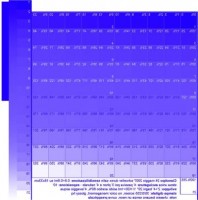
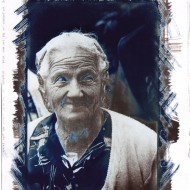
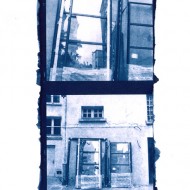
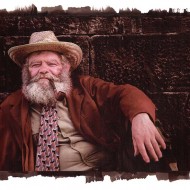
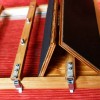
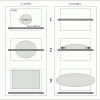





























Salve, sono una ragazza di Roma. Ho intenzione di realizzare degli ingrandimenti di negativi per poterci lavorare sopra. Cosa mi consigli di fare per iniziare? Per esempio i materiali. Macchina fotografica ho sia la Nikon non digitale e una macchina digitale. La grandezza che mi occorre per ora è di 1.80 per 60 è possibile?
Grazie
Ciao Giulia,
se mi dai qualche informazione aggiuntiva proverò a darti un po’ di consigli più precisi. In primo luogo: che tipo di lavori devi fare? Per cosa ti serve un negativo ingrandito? Sei obbligata a stampare per contatto? Quale procedimento vorresti utilizzare? Una tecnica antica come gomma, cianotipo, VDB o per esempio la carta baritata tradizionale? Le dimensioni che citi significano 180x60cm? A che tipo di equipaggiamento (macchine, scanner, plotter, camera oscura, etc) hai accesso?
A parte queste precisazioni, i negativi digitali in teoria funzionano indipendentemente dal formato e dal materiale di partenza.
Tieni presente però che, se non vuoi delle posterizzazioni nella stampa finale, devi partire da un file di 16bit (reali), quindi in digitale devi scattare in Raw e in analogico devi avere uno scanner che permetta di acquisire le immagini con questa profondità di colore. Se poi la posterizzazione non ti disturba, naturalmente puoi lavorare anche a 8bit.
Se stampi delle foto di 180cm, a meno che il dettaglio non sia essenziale per te, devi prevedere una macchina grande formato o uno stitch digitale. Per stampare un negativo di queste dimensioni poi hai sicuramente bisogno di un plotter. I trasparenti Agfa Copyjet, quando li ho comprati un paio di anni fa, erano disponibili anche in rotoli larghi 60 centimetri e lunghi qualche decina di metri, rotoli appunto per i plotter. Il prezzo del rotolo credo sia abbastanza elevato, ma credo che sia la soluzione più economica (relativamente agli altri sistemi) e più versatile. Se non hai accesso a una stampante grande formato puoi utilizzare tanti negativati di formato più piccolo, uno di fianco all’altro. Se guardi l’intervista a Massimo Attardi vedrai che lui fa proprio in questo modo.
Tieni comunque presente che stampare grande è molto difficile, almeno nella fase di apprendimento devi partire dai piccoli formati. La sola stampa per contatto, a meno di non avere un pressino o torchietto con un’eccellente sistema di pressione, rende necessario l’uso di un bromografo con pompa a vuoto, che non credo sia facile trovare delle dimensioni che citi. Probabilmente l’unica soluzione dai costi non proibitivi è farsi costruire un pressino su misura e stampare col sole. Se usi semplicemente carta baritata o la tecnica del cianotipo non avrai eccessivi problemi, ma se per esempio vuoi fare una gomma bicromata o un carbone devi essere veramente esperta per riuscire a stampare così grosso. Non è per scoraggiarti, per esempio Jean Janssis riesce a fare delle gomme di qualche metro di lato, è solo per dire che forse è meglio iniziare con un formato più contenuto, come l’A3. Una volta che sarai a tuo agio con i negativi digitali potrai passare ai formati superiori.
Per finire, la via dei negativi ingranditi analogici, Ovvero interpositivo e negativo ingrandito, la seguirei solamente se ne hai già a disposizione moltissimi, per esempio uno stock scaduto in una scuola di fotografia, perché i negativi di quel formato sono veramente cari e c’è tantissimo spreco, ci vuole un sacco di tempo e pazienza per imparare ad usarli correttamente.
In ogni caso, se mi dai qualche informazione in più cercherò di essere più preciso anche nelle risposte.
Ciao
f
In verità avevo pensato più all’idea terminata che al procedimento per ottenerla e probabilmente questo traspare dalle mie richieste poco precise. I negativi tanto ampi mi occorrevano per una mostra. Avevo l’idea di prendere dei negativi che fossero identici a quelli che normalmente conosciamo nel formato standard solo di grandi dimensioni e poi di appenderli in serie per creare delle giustapposizioni nello spazio. Amo molto Segal (l’artista) e se lo conosci certamente avrai notato la somiglianza tra i suoi corpi e le figure fantasmatiche dei negativi fotografici. Ne ho parlato con un paio di artisti ma ho bisogno di dettagli tecnici non concettuali. So bene cosa voglio devo solo arrivarci per gradi. C’è un posto che potrebbe eseguire il lavoro per me? Magari potrei portare loro dei negativi di ridotte dimensioni con l’immagine da me scelta. Che ne pensi? comunque se mi mandi una e-mail personale potremmo parlarne per telefono.
grazie
Giulia
Mi pare di capire quindi che il prodotto finale è il negativo e non la stampa. Se è così questo semplifica enormemente le cose. Se infatti ti basta avere un aspetto da negativo fotografico tradizionale il grosso del lavoro da fare sui negativi digitali, scelta del colore e della curva di linearizzazione, diventa perfettamente inutile.
Non credo che troverai facilmente un laboratorio che ti ingrandisca negativi tradizionali e i prezzi sarebbero esorbitanti, almeno di qualche centinaia di euro a negativo. Puoi allora tentare la strada della stampa digitale, probabilmente i laboratori professionali di alto livello non hanno grandi problemi a stampare su un materiale trasparente.
In questo caso portandogli un negativo analogico e facendo una scansione professionale riesci a stampre grosso anche da piccolo formato.
Comunque ne possiamo parlare anche per telefono. Io vivo a Parigi, quindi la cosa migliore è utilizzare skype. La mia mail personale la trovi nella pagina dei contatti.
ciao
f
Ciao. io vorrei sapere come posso, e soprattutto se si può, passare dei negativi di 60 mm al pc. Ho cercato in giro degli scanner ma purtroppo scansionano solo pellicole 35 mm, cosa mi rimane da fare?
Grazie mille
Ciao Miriam,
immagino che i negativi 60mm sono i negativi 120, i medio formato quadrati, per intenderci i negativi ottenuti con una Rollei o una Hasselblad.
In questo caso li puoi tranquillamente scansionare, ci sono molti scanner che prendono il medio formato, fino al 6x9cm. Quello che uso io è il Super Coolscan 9000 della Nikon.
Anche uno scanner a piatto permette di acquisire le pellicole medio formato, ma in generale la qualità diventa accettabile solo a partire dal grande formato.
Se non vuoi comprare uno scanner puoi chiedere a qualunque buon laboratorio fotografico di farti la scansione, ma i prezzi in generale sono piuttosto alti, se devi fare molte scansioni l’acquisto di uno scanner in genere viene ammortizzato abbastanza rapidamente.
ciao
f
domanda pratica.
ho letto con molto piacere il link al sito di Damiano Bianca (di cui ho anche un bel libro di tecniche fotografiche antiche) e mi ha chiarito molte cose.
nel suo link lui fa riferimento ad un supporto per stampa ink jet dell’agfa chiamato Pictorico OHP Transparency Film.
dopo una ricerca preliminare, non sono riuscito a trovare un sito italiano o europeo che lo spedisce in italia e nei negozi “specializzati” dove sono andato a cercarlo, sembrava parlassi della pietra filosofale.
quindi ti chiedo:
tu usi questo tipo di supporto?
se si, dove lo compri?
se no, quale usi?
e dove lo compri?
Ps. oggi mi è arrivata una lampada di wood al mercurio ad alta pressione, spero di fare qualche prova di stampa nei prossimi giorni.
i tubi sylvania blb che hai usato tu , mi hanno detto che non sono più in produzione (anche se personalmente non ci credo molto)
grazie mille per la disponibilità, la pazienza e la chiarezza delle tue risposte.
ciao
rettifica:
solo ora leggendo meglio il tuo articolo, scopro che ci sono già le risposte alle domande che cerco.
probabilmente trascinato dal link di damiano bianca, ho tralasciato di completare la lettura del tuo.
🙂
Ciao Giorgio
come hai già visto da solo tutte le risposte sono già nell’articolo, quindi avrei risposto con RTFM che, a seconda dell’umore puoi tradurre con “Read the FINE manual” o “Read the FUCKING manual” 🙂 effettivamente su Camera Obscura sono presenti tantissime informazioni, frutto di qualche anno di pratica e esperienza, quindi è necessario un po’ di tempo per leggere e digerire tutti gli articoli.
Piccola precisazione: da un anno circa ho completamente abbandonato camera oscura e tradizionale, preferendo la fotografia digitale. Per questo motivo a proposito delle tecniche antiche parlo sempre al passato.
Per quanto riguarda infine la scelta dei trasparenti l’uno vale l’altro. Compra quello meno caro e più facile da acquistare.
ok grazie per le indicazioni 🙂
oggi a lavoro ho avuto un po i tempo libero e ho letto un bel po di roba su questo e su altri siti linkati.
c’è un aspetto che mi sfugge (forse per questioni linguistiche) relativo alla scelta del colore da usare per il negativo.
sono consapevole che alcuni colori filtrano gli UV meglio di altri e capisco la logica di utilizzare un gradiente cromatico come quello citato (HSB-RNP Array).
tuttavia non sono sicuro di aver capito come legerre il risultato e quindi come scegliere il colore giusto.
ho anche un altra perplessità (e temo non sarà l’ultima, purtroppo per te 😉 )
correggimi se sbaglio.
io faccio prima una valutazione del tempo di posa con un gradiente tipo t3110
poi con gradiente cromatico hsb.
da questo ricavo il tempo di esposizione e il colore più indicato per il negativo (da vedere come)
poi creo un gradiente con chart trob e lo stampo.
lo espongo per il tempo di posa.
e lo scansiono.
ora però viene il primo dubbio, se è un cianotipo, come lo devo scansionare ?
a colori? in B/N?
oppure non importa?
spero di chiarimi le idee prima di averti ricoperto di domande fino alla nausea 🙂
ciao ciao
Ps. sebbene mi dispiaccia che tu abbia abbandonato(direi più tosto sospeso) questa attività, sono sicuro che ci ritornerai, io stampavo il bianconero quando avevo 12 anni, e poi per tutto il periodo dell’università non ho toccato una macchina fotografica… e adesso invece, piano piano… 😉
Ciao,
per quanto riguarda la preparazione dei negativi digitali leggi e rileggi gli articoli citati, dopo un po’ dovrebbe essere chiaro. Ecco comunque un riassunto:
1) con la T3110 stabilisci il tempo Tref necessario e sufficiente per ottenere i neri. Esporre di più chiude inutilmente le ombre e richiede una curva di linearizzazione più drastica, esporre di meno non permette di ottenere la dmax propria al procedimento;
2) stampando la paletta dei colori utilizzando il tempo di esposizione Tref determini quale colore Cref permette di ottenere bianchi puliti. Le scelte in genere sono molteplici, bisogna sicuramente scegliere un colore vicino ad uno che da bianchi sporchi, perché, come nel caso del punto 1, altrimenti impasti le luci ed è necessaria una curva di linearizzazione molto più drastica. Al di la di questo alcuni colori, nonostante diano un bianco puro, funzionano meglio di altri per quanto riguarda il punto 3, quindi alcune prove sono necessarie;
3) stampi un gradiente utilizzando tref per l’esposizione e Cref per il colore del negativo. Questo serve a calcolare la curva necessaria per linearizzare la risposta.
Fatto tutto questo (a volte è una significa una montagna di ore) puoi creare una action che, presa un’immagine digitale, la inverte, la colora e applica la curva di linearizzazione. Per stampare poi basta usare il tempo di riferimento e aver cura di non modificare nessun parametro di stampa.
Quello della scansione è un problema concreto, diciamo che devi fare la miglior scansione che riesci a fare a colori, poi converti in scala di grigi, la pulisci dalla polvere, sfuochi ogni casella per levare il grano e fare la media e a questo punto fai i livelli con photoshop per ottenere una casella perfettamente e una perfettamente bianca. L’ideale sarebbe un densitometro, ma con un buon scanner si ottengono ottimi risultati. Scanner scadente invece significa solo grandi frustrazioni.
Una nota di massima: non passare la vita a fare test per determinare il negativo perfetto, il negativo deve essere solo uno strumento per la stampa, e non un fine in sé. Alcuni procedimenti (come il cianotipo) sono molto stabili, nel senso che se vari un po’ i parametri di stampa (carta, temperatura, etc) le caratteristiche di stampa variano relativamente poco, e quindi puoi utilizzare un negativo digitale anche variando la procedura di stampa. Altre tecniche, come la gomma, sono terribilmente sensibili.
Per quanto riguarda infine le tecniche antiche: già da un paio d’anni mi sono reso conto che, in termini di qualità reale delle stampe, il digitale contemporaneo è nettamente superiore a qualunque tecnica antica, compreso platino e carbone. Praticavo tecniche antiche solo per il piacere di farlo, come la barca a vela, che da un punto di vista puramente tecnico è sicuramente inferiore al motore, ma è molto più piacevole. Magari da vecchio riprendero’ a stampare, chissa’…
punto 2) ancora non ho capito il criterio di valutazione selezione del colore più idoneo.
diciamo che io ad occhio avevo già modificato la curva fino ad ottenere dei risultati decenti, ma che non mi dispiacerebbe avere una curva da applicare come base ai negativi, senza stare li a diventare pazzo per ogni immagine.
a me di queste tecniche piace l’aspetto alchemico, quasi magico. purtroppo, pur riconoscendo una raffinatezza maggiore e un dettaglio eccezionale nella fotografia moderna, non vedo più questa sorta di giuoco di prestigio, di fenomeno soprannaturale, di miracolo, che mi travole ogni volta che un imagine appare su un foglio di carta comunissima per effetto di fenomeni chimici e fisici che solo in piccola parte riusciamo a comprendere.
Ps.
ti ho mandato 2 mail. mi confermi che le hai ricevute? altrimenti cambio casella di posta.
PPs. grazie devvero tanto per il tempo, la pazienza e la disponibilità 😉
You can also subscribe to this post comments RSS feed.